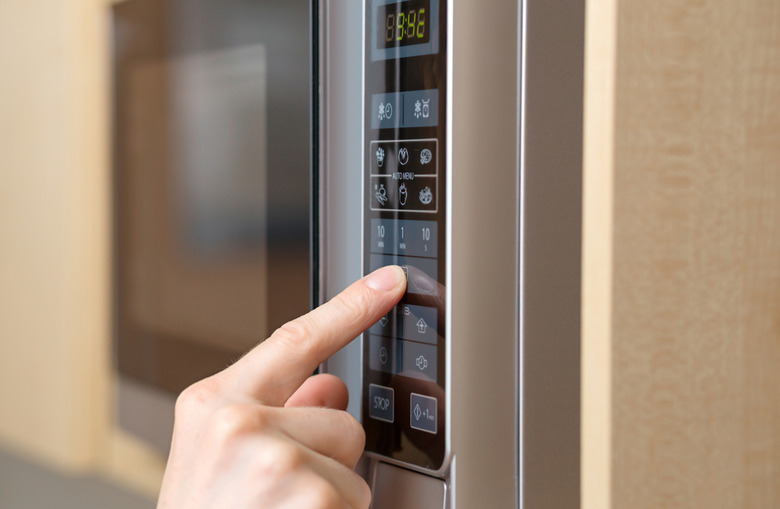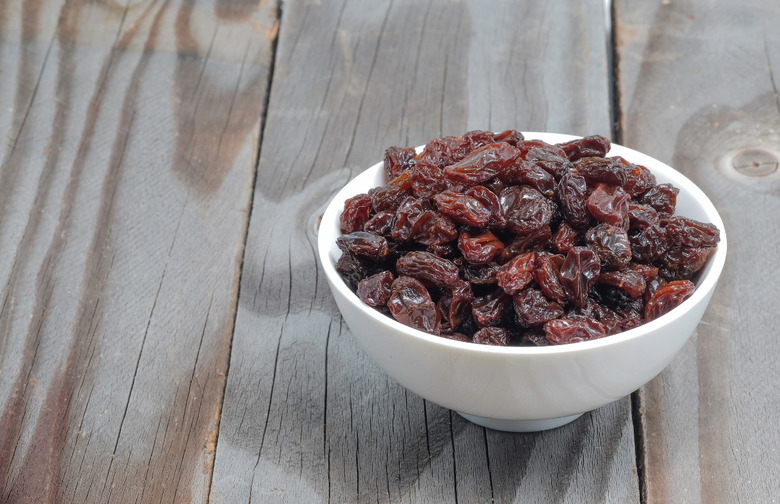20 Ways You've Been Using Your Microwave All Wrong Slideshow
You're not dumb — you know not to microwave tin foil and to double-check that you didn't accidentally leave your metal spoon in the bowl. But there are tons of other ways people are getting it wrong with this common household appliance. You're probably making at least a few of these mistakes.
We're sure you know what unhealthy foods you shouldn't be eating, too. When it comes to your health, a good rule of thumb is to rule out ramen, TV dinners, and other microwavable classics. But even healthy foods — such as leftovers of veggie-packed dishes, olive oil, and fruit — can become harmful from the microwave's heat waves.
Did you know grapes could literally combust in the heated chamber? What about eggs?
With such high temperatures and frequency of electromagnetic waves going on, microwaves were bound to be problematic in one way or another. The fact is, if you're not careful, the inside of your kitchen's heating chamber could turn into a splatter-stained, bacteria-infested wasteland.
Being Impatient
We know — one minute of intense heat seems like a way more appealing option than waiting five minutes for the same temperature. The hangriness is real.
However, the food you get at the end doesn't cook the same. Certain foods cook much better at lower temperatures. Meat and cheese can get tough and chewy on high heat, while vegetables do best with a higher heat blast. Change your settings based on whatever it is you're reheating — you'll be able to taste the difference!
Boiling Water
I know you think it's more efficient, but come on — when have you done this and had it work well? The water is always too hot and you always get burned.
When water is heated to too high of a temperature, it either boils over immediately or remains still until moved — at which point it boils over violently. We recommend taking the extra five minutes to boil your water over the stove. Or you could invest an extra $10 and just get a water boiler.
Defrosting Fruit
According to studies conducted in Russia, frozen fruit's beneficial glucoside gets converted into a carcinogenic substance when microwaved. Additionally, the high water content of frozen fruit (and fresh fruit as well) results in it generating internal steam and causing potential explosion. Either leave your fruit out to thaw or buy it fresh — they'll likely taste better that way, too!
Defrosting Meat
It never defrosts evenly. You might think this is okay in the moment, but two undesirable outcomes are likely:
1. The outside of the meat cooks and gets rubbery.
2. The inside of the meat remains frozen, which can result in bacteria growth and food poisoning.
We'd rather just leave our meats overnight in the fridge as the World Health Organization recommends.
Destroying Your Vegetables
Many vegetables, such as mushrooms and broccoli, can lose their nutritional value when exposed to microwave heat. When you reheat your veggie-filled food, you're going through the motions of eating your vegetables, but you aren't reaping as many benefits as you think.
That's right: The recommendation to steam your broccoli in the microwave is not only tasteless, but also nutritionally misguided. Spinach and beets can even become carcinogenic when exposed to the harsh waves.
To make your greens and fungi worth consuming, just wait and cook them fresh. You can also heat cooked vegetables in the oven or on the stove if you're short on time.
Hard-Boiling Eggs
Despite what Pinterest tutorials have told you, this is not a microwave hack you want to use. When you microwave an egg, steam generates inside the shell. This can cause an explosion — ever tried scrubbing raw egg off of anything? You do not want to have to clean this up.
Heating Processed Meats
We all know processed meats like deli meat and sausage contain nitrates, preservatives, and other chemicals. But did you know they had the capacity to get even worse? When they get reheated, they are likely to produce cholesterol oxidation products, which have been linked to an increased risk of heart disease.
Ignoring the Smoke Point of Oils
All oils have a smoke point: That's a temperature past which the molecules in the oil denature and smoke. As you could probably have guessed, the result is not healthy for you. Once the oil smokes, it loses many of its nutritional benefits. Microwaving heating oils is a good way to speed up that process — save the oily foods for reheating another way.
Leaving in the Hot Peppers
Hot peppers will start a fire in more places than just your mouth. They catch flame when you microwave them. In addition to actually burning, they'll leave your eyes burning, as well when capsaicin, a compound responsible for their spicy flavor, is released at a high heat. You open the microwave door and are hit with a wave of fiery fumes. Pick the peppers off before you microwave to protect your nose and eyes.
Leaving It Empty
Have you ever heard of a magnetron? It sounds like a killer robot, but it's a real thing inside your microwave. When you keep it running while empty, it absorbs all the heat waves that go unused in the empty chamber. This can damage your machine and even start a fire.
Leaving Takeout in the Styrofoam Containers
Despite its squeaky, rubbery texture, Styrofoam is a type of plastic. When you put plastic in the microwave, it releases all kinds of toxins into your food (unless it's toxin-free).
BPA's, anyone? Mmmm, delicious.
Letting the Middle Stay Cold
When food isn't heated up all the way, it has the potential to grow harmful bacteria. If the middle is cold and you're impatient, grab a snack while you wait for it to cook all the way through. Trust us; the food poisoning you could get is not worth it.
Not Covering Your Food
Food splatters in the microwave. It's just a fact. Avoid the mess and lay a paper towel over your plate or bowl before pressing "start." It takes seconds to do and saves you hours of cleaning!
Overcooking Your Chicken
You've probably experienced this unfortunate effect firsthand. The high heat of the microwave can continue to cook your perfectly-done, still-a-little-moist chicken to the point of dry, rubbery disappointment. I know it's a little more labor-intensive, but try heating up your chicken over the stove or in the oven.
Reheating Dishes With Red Sauce
Sigh. We never learn. Time and time again, we've all reheated spaghetti sauce and gotten frustrated with the mess left behind. Ever thought that perhaps it's not the microwave's fault at all but actually the red sauce responsible for the splattering?
Do yourself a favor and heat the spaghetti sauce over the stove. Not only will it heat more evenly, but you'll spare yourself all the scrubbing.
Reheating Food You’ve Left Out
When food is allowed to cool to room temperature after cooking, it has the potential to start growing bacteria and other organisms inside. When you refrigerate food immediately, it prevents this problem. However, if you're leaving your leftovers on the counter and reheating them to load your plate with seconds later on, you're risking harmful exposure. Refrigerate your food right away.
Reheating Raisins
Grapes combust into a fireball of plasma — and shockingly, we're not exaggerating — when microwaved, a sensation resulting in an explosion (ha) of YouTube videos and spoofs. You don't want to become one of these experiments gone wrong.
While you're probably not trying to warm your grapes before eating them, you might be cooking with raisins. They don't explode, but they do generate quite a lot of smoke —probably not a substance you want to be eating.
Using Plastic Containers
There are some plastic containers that are microwave safe. But the majority of containers are not — when you heat up plastic, it releases potentially harmful chemicals. BPA's and phthalates, for instance, have been linked to liver cancer, infertility, and genetic mutations in reproductive cells that can lead to genital deformities in offspring.
Take the extra minute or two and transfer your leftovers to a plate — for the sake of your children's reproductive health.
Walking Away
Oatmeal can overflow, liquids can boil over, and sauces can splatter. Some items can even burn or explode. Stay near to the microwave and watch carefully to be sure nothing funky is happening with your food. The timer is only counting down a couple of minutes — we promise you can spare them.
Warming Breast Milk
Microwaves do not heat things safely or evenly, especially for babies. Studies have shown that "hot spots" occur in breast milk when you heat it under microwave heat waves. These boiling hot pockets of liquid could burn your baby's mouth.
A better way? Boil a pot of water and place the bottled milk inside until it's heated all the way through.
For 14 delicious dishes that are totally microwave-friendly, click here.




















